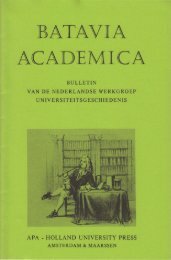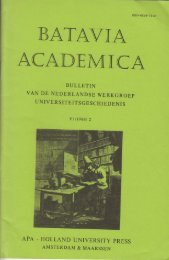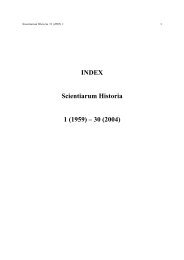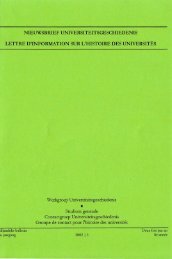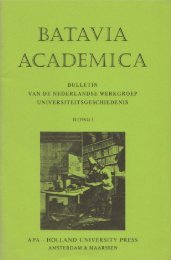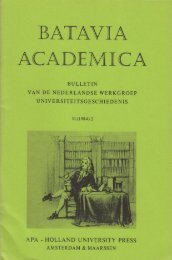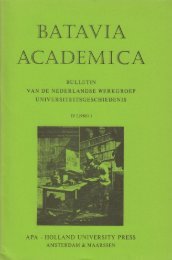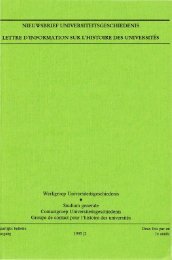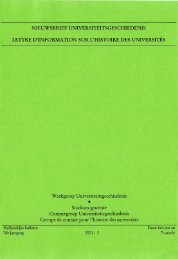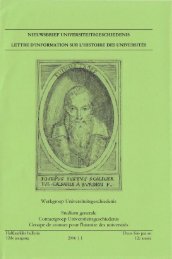the ocular harpsichord of louis-bertrand castel - Gewina
the ocular harpsichord of louis-bertrand castel - Gewina
the ocular harpsichord of louis-bertrand castel - Gewina
Create successful ePaper yourself
Turn your PDF publications into a flip-book with our unique Google optimized e-Paper software.
Castel's <strong>ocular</strong> <strong>harpsichord</strong> 71<br />
from afar, crescendo and decrescendo, <strong>the</strong> deep tones <strong>of</strong> <strong>the</strong> basset horn 148<br />
Never<strong>the</strong>less, this phenomenon <strong>of</strong> synaes<strong>the</strong>sia soon made itself felt in contemporary<br />
music. Some colour instruments were built in Great Britain and in <strong>the</strong><br />
United Sates; in Russia one Alexander Mozer tried to do <strong>the</strong> same on request<br />
<strong>of</strong> <strong>the</strong> composer Scriabin, who wrote a part for such an instrument in his<br />
symphonic poem Prome<strong>the</strong>e, le poime du feu <strong>of</strong> 1908-1910. None <strong>of</strong> <strong>the</strong>se<br />
instruments seem to have been based on any formal rules <strong>of</strong> harmony. The<br />
eighteenth-century debate remained a closed book. The only reminiscence was<br />
<strong>the</strong> article "Colour-music" (<strong>the</strong> contemporary version, <strong>of</strong> course) by Adrian B.<br />
Klein in <strong>the</strong> 14th edition <strong>of</strong> <strong>the</strong> Encyclopaedia Britannica, published in 1929,<br />
where Castel was mentioned as "<strong>the</strong> Giotto or Guido d'Arezzo <strong>of</strong> colour-music",<br />
although <strong>the</strong> author hardly knew anything about Castel's views.<br />
If one wonders whe<strong>the</strong>r since <strong>the</strong> eighteenth century anything has been<br />
achieved in keeping with Castel's ideas, perhaps one should say that <strong>the</strong> light<br />
and laser shows <strong>of</strong> <strong>the</strong> modern disco<strong>the</strong>que, though also lacking rules <strong>of</strong><br />
harmony, come closest. Indeed, Castel himself already suggested that "by using<br />
carefully installed mirrors, or covering <strong>the</strong> walls <strong>of</strong> an appartment with mirrors,<br />
one can multiply <strong>the</strong> object and scatter it in all directions," or that <strong>the</strong> keys <strong>of</strong><br />
his instrument could be coupled to centrally placed lights in casings <strong>of</strong> coloured<br />
glass, such that "<strong>the</strong> whole room would bath in light <strong>of</strong> a single colour which<br />
changes incessantly through <strong>the</strong> movements <strong>of</strong> <strong>the</strong> keys".'"^<br />
H<strong>of</strong>fmann, "Kreisleriana": "Hochst zerstreute Gedanken," in Werke, vol. 1, p. 56: "im Zustand<br />
des Delirierens, der dem Einschlafen vorhergeht, vorziiglich wenn ich viel Musik gehort habe, finde<br />
ich eine Ubereinkunft der Farben, Tone und Diifte ... Der Duft der dunkelrolcn Nelken wirkt mit<br />
sonderbarer magischer Gewalt auf mich: unwillkiirlich versinke ich in einen traumerischen Zustand<br />
und hore dann wie aus weiter Feme die anschwellenden und wieder verflicBenden tiefen Tone des<br />
Bassethoms."<br />
Mimoires de Trevoux, December 1735, p. 2746: "par des Miroirs places avec art, & en<br />
tapissant meme tout un appartement de Glaces, on peut multiplier I'objet & le semer de toutes<br />
parts"; "ensorte que tout un appartement soit colore d'une couleur mobile que le mouvement des<br />
touches fait changer a chaque instant."



